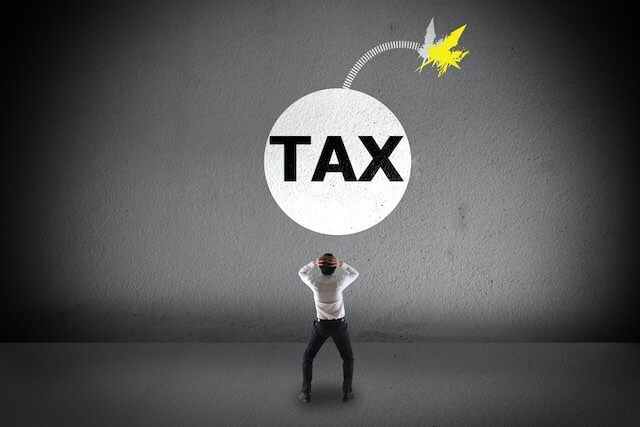As of October 1, 2023, the Internal Revenue Service (IRS) has increased the interest rate for tax underpayments to 8%, much higher than the interest rate of 3% just two years ago. The IRS determines the interest rate every quarter using the federal short-term rate plus three percentage points for most individual taxpayers. Rising interest rates are the cause of the large spike.
Who Do Tax Penalties Affect?
Everyone.
It is common for a W2 employee to have their taxes automatically deducted based on their income. What if you’re married? Have a second job? Run a business on the side? Any one of these factors can cause a W2 employee to owe much more than what is being automatically deducted.
If you are a 1099 employee, you must make your estimated tax payments on your own. Retirees receiving a pension are generally withholding too little or too much. Estimating your taxes can be easy when you have the correct tools.
Tax penalties can be severe if you underpay for the year. You must make your estimated tax payments or be hit with costly tax penalties that could run into the thousands of dollars with the higher interest rates.
What is the Penalty for Underpayment of Taxes?
Also known as the “Failure to Pay” penalty, this is a tax penalty that is imposed on individuals who haven’t paid enough of their total estimated tax and withholding that is due. You must make payments as you receive income throughout the year through either: payroll withholding, estimated quarterly taxes, or a combination of both.
In effect, the penalty is the sum of the penalties for each day during which an underpayment exists. The penalty for each day is computed by multiplying the daily rate by the underpayment amount. The daily rate is the rate determined under IRC 6621 divided by the number of days in the calendar year.
What is the Safe Harbor Rule?
The Safe Harbor rule could save you from costly penalties when the requirements are met. That means the penalty could be waived or reduced.
The IRS will not charge an underpayment penalty if:
- You owe less than $1,000 in tax after subtracting withholdings and credits OR
- You paid at least 90% of the tax for the current year OR
- 100% of the tax shown on the return for the prior year, whichever is smaller
The rule is slightly different for higher-income earners: your Adjusted Gross Income (AGI) on your previous year’s return is over $150,000 for individuals OR AGI on your previous year’s return is over $75,000 if married filing separately.
You must pay the smaller of:
- 90% of the tax shown on the current year’s tax return OR
- 110% of the tax shown on the return for the previous year
Additional Penalties – Failure to File
The Failure to File penalty is calculated based on how late you file your tax return and the amount of unpaid tax as of the original payment due date (not the extension due date).
The calculation is as follows:
- 5% of the unpaid taxes for each month that a tax return is late
- The penalty will not exceed 25% of your unpaid taxes
- If both a Failure to Pay (underpayment) and Failure to File Penalty are applied in the same month, the Failure to File Penalty is reduced by the amount of the Failure to Pay Penalty for that month, for a combined penalty of 5% for each month that you return was late.
How to Estimate Your Tax Withholdings
Regularly, we use an effective tax rate calculator. The US tax code follows a progressive tax system so even if you fall in one tax bracket, your effective tax rate is usually much lower.
Example (living in Virginia):
- Spouse 1 = $175,000
- Spouse 2 = $45,000
- Combined Income = $220,000
- Federal Tax Bracket = 24%
- State Tax Bracket = 5.75%
In this example, you may be in the 24% federal tax bracket and 5.75% state bracket, however, your effective tax rate would be much lower at 15.57% federal and 5.35% state. Using an effective tax rate calculator will help you better determine your taxes owed.
Estimated Tax Payments Are Due as Follows (for 1099 earners):
- January 1 to March 31 – April 15
- April 1 to May 31 – June 15
- June 1 to August 31 – September 15
- September 1 to December 31 – January 15 of the following year
Where to Send Estimated Taxes
You may send estimated tax payments with Form 1040-ES by mail or you can pay online at www.irs.gov/payments.
The content is developed from sources believed to be providing accurate information. The information in this material is not intended as tax or legal advice. Please consult legal or tax professionals for specific information regarding your individual situation. The opinions expressed and material provided are for general information and should not be considered a solicitation for the purchase or sale of any security. Securities and advisory services offered through Osaic Wealth, Inc., member FINRA, SIPC. Osaic Wealth is separately owned and other entities and/or marketing names, products or services referenced here are independent of Osaic Wealth. Representatives may not be registered to provide securities and advisory services in all states. Branch address: 10701 Parkridge Blvd, Ste 130, Reston, VA 20191. Branch phone: 571-543-2783.





